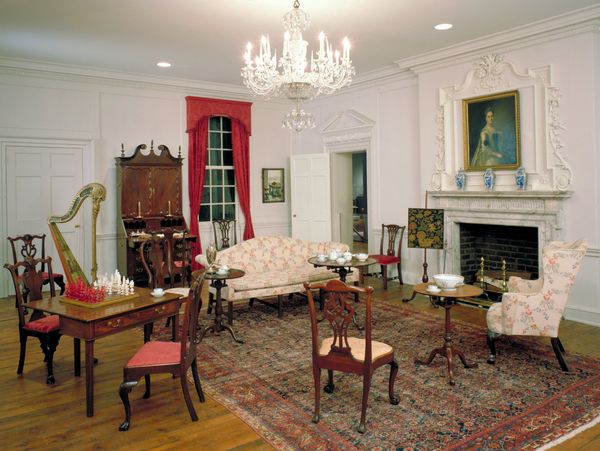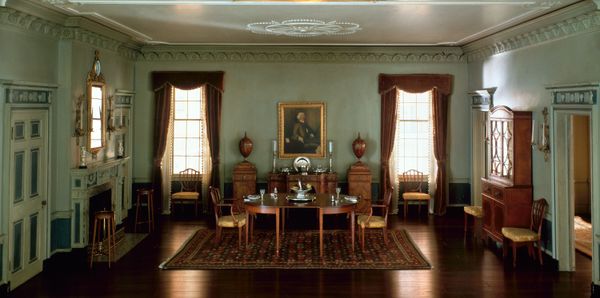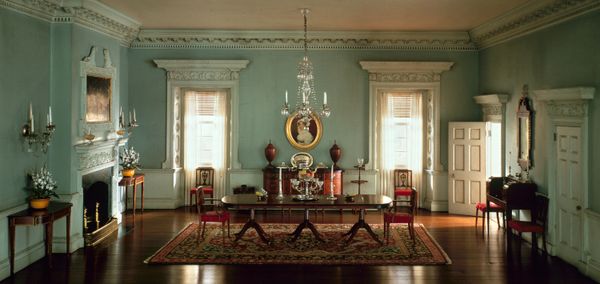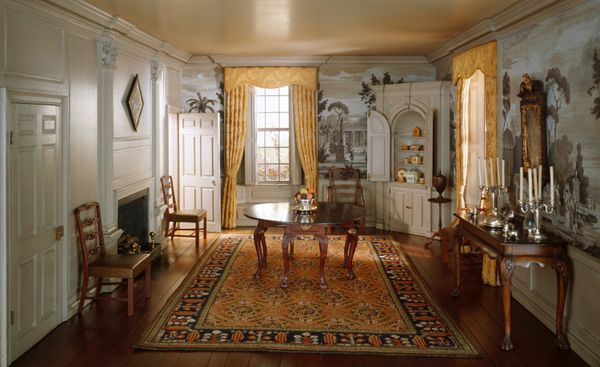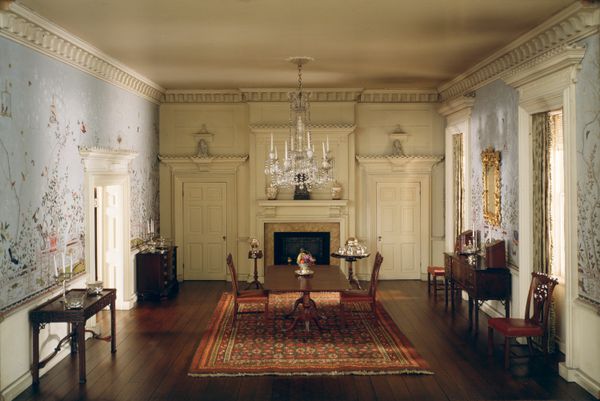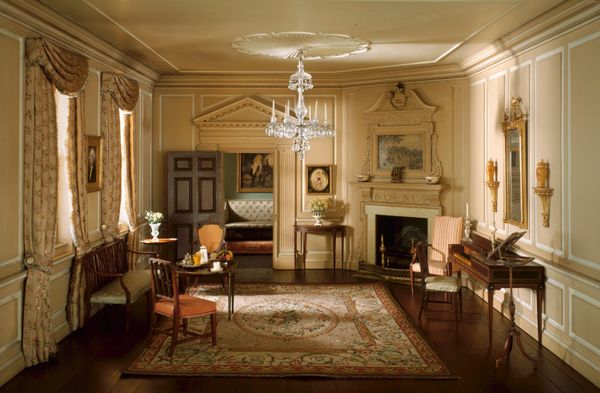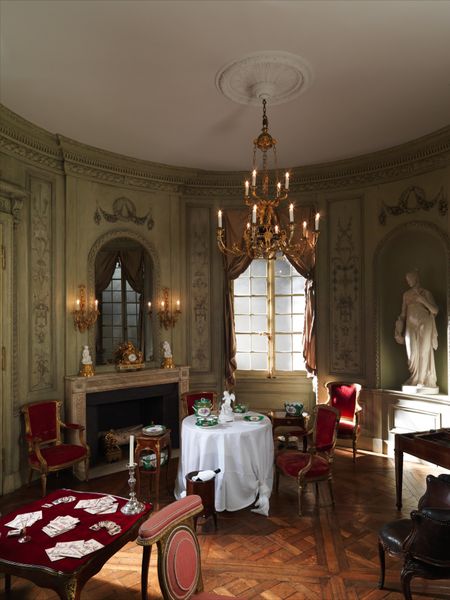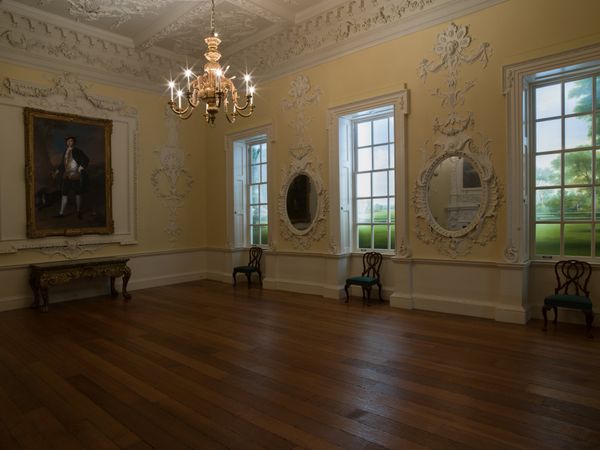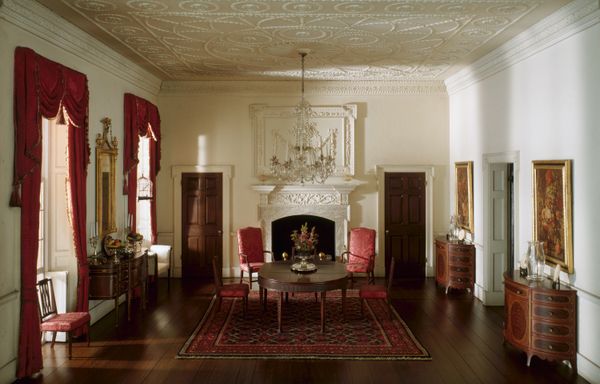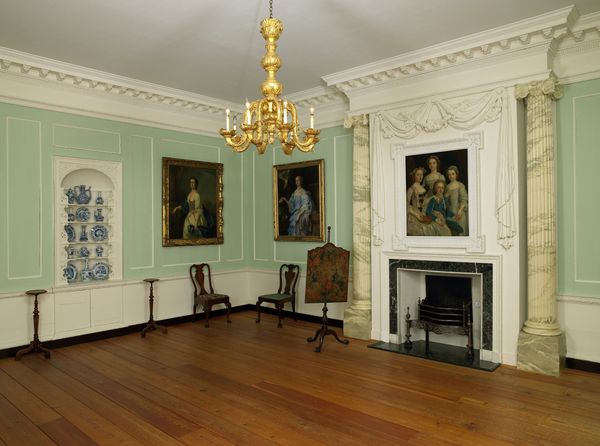
painting, architecture
#
portrait
#
interior architecture
#
neoclacissism
#
painting
#
genre-painting
#
architecture
Dimensions: 257 x 255 in. (652.78 x 647.7 cm)
Copyright: Public Domain
This period room presents a dining room interior, probably made in the late 18th century, filled with locally sourced materials and goods traded through global networks. Look closely and you will see a variety of woods: mahogany for the furniture, prized for its rich color and workability, alongside locally sourced pine for the floors. The textiles are also key, from the damask curtains to the wool rug; each thread represents countless hours of labor. The silver tableware and glassware speak to the global trade routes that supplied raw materials and finished goods to Charleston's elite. Consider the skilled labor required to produce all of this. Cabinetmakers, weavers, glassblowers, silversmiths, and other artisans contributed their expertise, often working under conditions of enslavement. By examining the materials and the modes of production, we gain a deeper understanding of the social and economic forces that shaped this seemingly simple domestic space. It prompts us to reflect on the amount of work involved in its production.
